We all love our fish to bits, but even the healthiest fish falls sick sometimes. If this is your first time caring for a sick fish, the process of diagnosing and treating your pet can be intimidating. Which symptoms should you look out for? Is the disease life-threatening? Can you treat the condition at home? These are just some of the questions that come to mind – and you are right in seeking out answers!
In this article, we will discuss 17 common fish diseases that you should be aware of, and provide some tips on how to identify them quickly. We don’t think you should be scared of fish diseases – just be informed and prepared. With a bit of knowledge and some good diagnosis skills, you can make sure your pet stays healthy!
17 Common Aquarium Fish Diseases
1. Fish Tuberculosis (Fish TB)
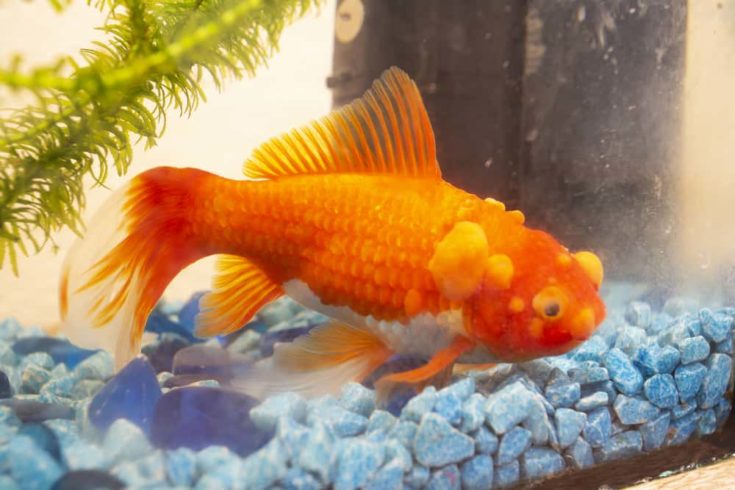
Sometimes known as the wasting disease, Fish TB is a bacterial infection caused by Mycobacterium spp. It is, unfortunately, one of the most common fish diseases in the fishkeeping trade and takes the lives of many fish, particularly those in tanks with overcrowding or poor water quality. This disease is spread through contact between infected fish and healthy fish, or through infected water.
Despite the widespread nature of this illness, most cases of fish TB are not detected until the fish is already showing symptoms. Early signs of Fish TB include listlessness, loss of appetite, weight loss, and cloudy eyes. In more advanced cases, fish may develop skin lesions, nodules, and abscesses. Caught early, Fish TB can be treated with antibiotics; however, the mortality rate is still high.
Good tank maintenance is essential for preventing Fish TB. This includes regular water changes, proper tank cycling, and adequate filtration. If possible, quarantine new fish and check them for signs of illness before introducing them to your tank. Additionally, be sure to buy your fish from reliable sources, as this will reduce the risk of introducing an infected fish to your tank.
2. Dropsy
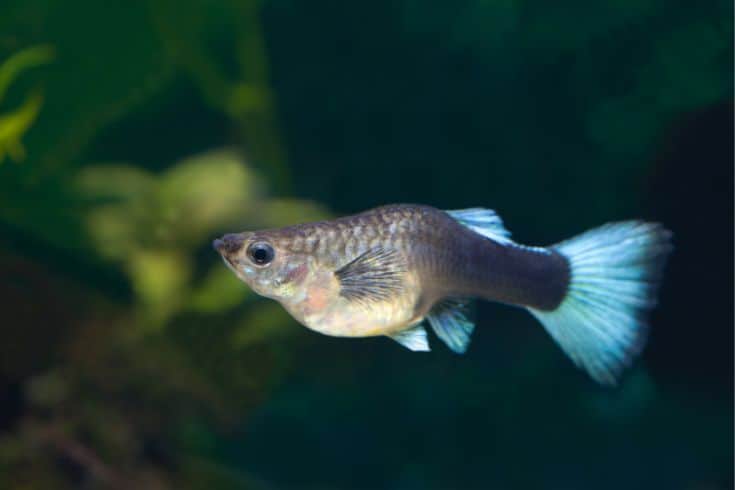
Technically speaking, dropsy is a symptom, rather than a disease in and of itself. It merely describes a condition in which your fish develops a swollen abdomen due to fluid accumulation. The most common cause of dropsy is a bacterial infection, but it can also be a side effect of other common diseases, as well as stress, viral infections, parasites, and nutritional deficiencies.
If your fish is showing signs of dropsy, it’s important to identify the cause so a proper course of treatment can be pursued. In the meantime, there are some steps you can take to help manage your fish’s symptoms while they heal. Keep their environment clean and free from ammonia or nitrates, and do make sure to give your sick fish access to plenty of nutritious food.
Because dropsy can be caused by several different factors, it’s important to consult a professional veterinarian if you have any trouble spotting the root cause. A qualified vet will be able to assess your fish’s condition and advise you on an appropriate course of action. You want to approach this in a decisive and timely manner because dropsy can be fatal if left untreated.
3. Fish Pop-Eye
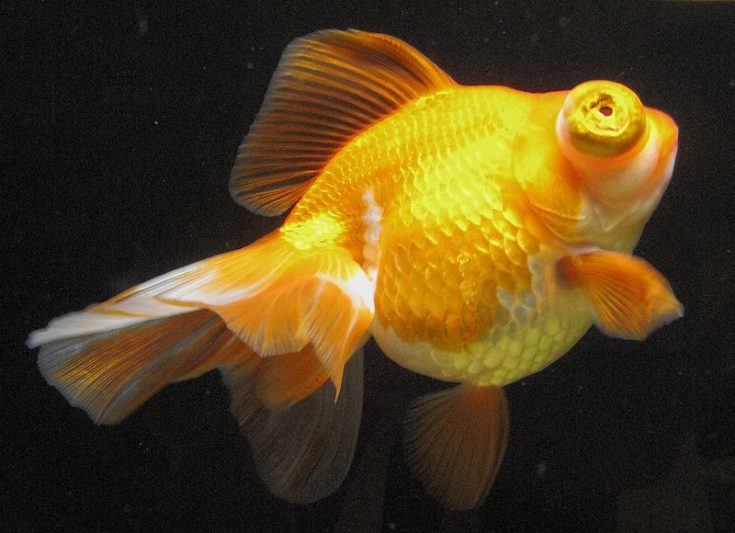
Of all the illnesses on this list, pop-eye is probably the most common and the easiest to diagnose. It is caused by a blockage or inflammation of one or both eyes, leading to swelling inside. Pop-eye is sometimes also seen in the later stages of dropsy, which makes sense. Dropsy causes swelling of the tissues in many places, so fish eyes are no exception.
The best way to prevent pop-eye is to keep your tank safe, clean, and habitable for your fish. Ensure that all your tank decorations are fish-safe and not likely to injure your fish. If you have any aggressive fish, please rehome them. Keeping the water temperature, chemistry, and oxygen levels stable also helps, as would testing your water parameters regularly.
If your fish does have pop-eye, please isolate it in a quarantine tank for safety and monitor its condition closely. Though pop-eye isn’t contagious, your fish needs space and isolation to minimize stress. Fish that are injured or ill also require extra attention, and a hospital tank allows you to observe your fish with ease.
4. Fin Rot
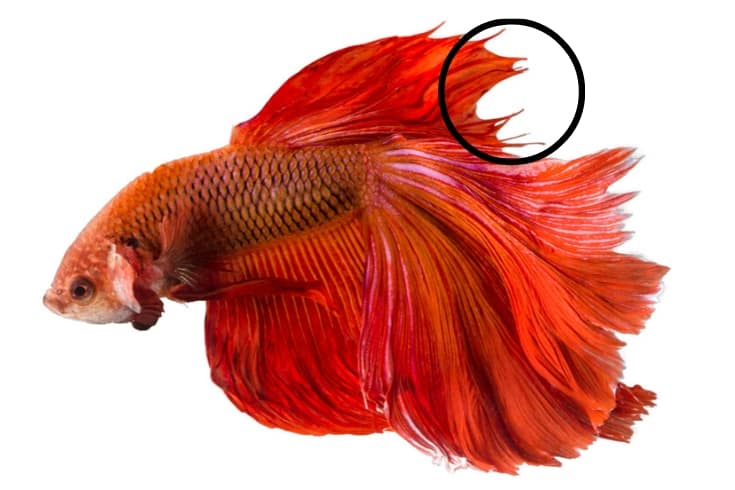
There are two main sources of fin rot – fin rot caused by a fungal infection, and fin rot caused by a secondary bacterial infection. When it comes to the former, the fungus causes a white, fluffy, cottony growth along the edge of the fin, eroding it until nothing is left. This can happen quite quickly on fish that are already stressed or otherwise weakened in some way.
In the case of bacterial fin rot, the fins become dull and frayed at the edges before being eroded. This type is often caused by poor water quality or an open wound that allows a secondary infection to take hold in weakened fish. These bacteria diseases can spread to other fish in the tank, leading to an outbreak of fin rot.
Depending on the type of fin rot, the treatments used may vary. If you see cloudy, fungus-like patches reminiscent of cotton wool disease, use fungal treatments to stop the spread. For bacteria infections, antibacterial treatments can be used in hopes of stopping the rot before it’s too late.
5. Ich
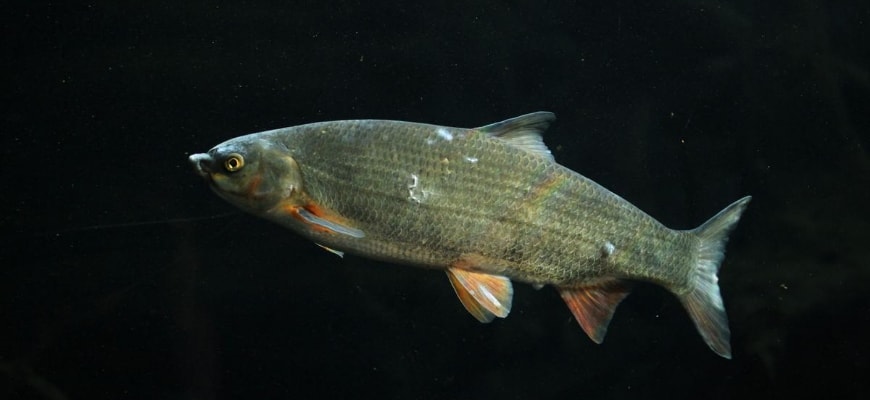
Unfortunately, ich is one of the most common diseases in freshwater fish – and one of the deadliest, too. This disease is caused by nasty parasites known as Ichthyophthirius Multifiliis, and it causes white spots to appear on the body, gills, and fins of affected fish. In most cases this type of parasite will also cause extreme itching for your pet.
Luckily, there are treatments to combat ich. Most of them are parasitic products that actively combat the infestation, while some are remedies to make the fish’s environment less desirable for said parasites. They may contain ingredients such as copper sulfate or malachite green. Often, you’ll need to treat both the affected fish and its environment to make sure the ich doesn’t make a comeback.
Awareness and proper preventive measures (such as testing new fish for parasites beforehand) are key to avoiding ich outbreaks. Good husbandry can go a long way in lowering your fish’s chances of catching this awful disease.
6. Head and Lateral Line Erosion
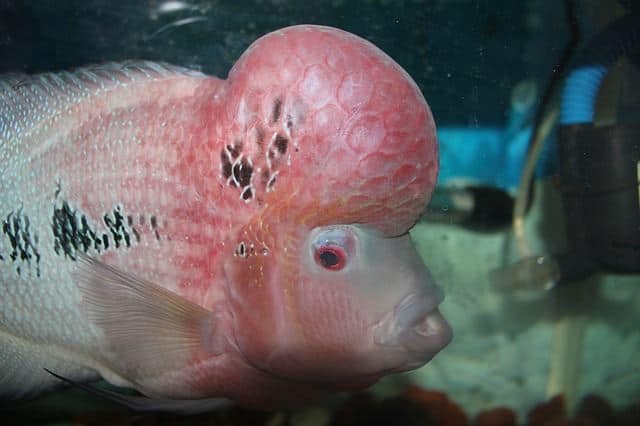
It’s no secret that fish are built a little differently compared to us humans, which can make understanding their anatomy a little difficult. Thing is, fish have something we don’t – the lateral line. This is a system of special organs that helps fish sense their environment in ways we can’t, like detecting pressure changes in water.
Head and lateral line erosion, or HLLE, is a condition that affects this part of their bodies. HLLE, true to its name, is characterized by the erosion of the head and lateral line of a fish. This happens when the protective scales on its body start to crack and fall off, causing the appearance of erosion along its lateral line. Thankfully, this condition isn’t fatal.
However, the cosmetic damage can be quite unpleasant to look at. The definitive cause of HLLE hasn’t been established yet. However, you can prevent it by providing your fish with good care. This includes making sure they’re in clean water, maintaining ideal temperature and pH levels, and feeding them a high-quality diet.
7. Gill Flukes
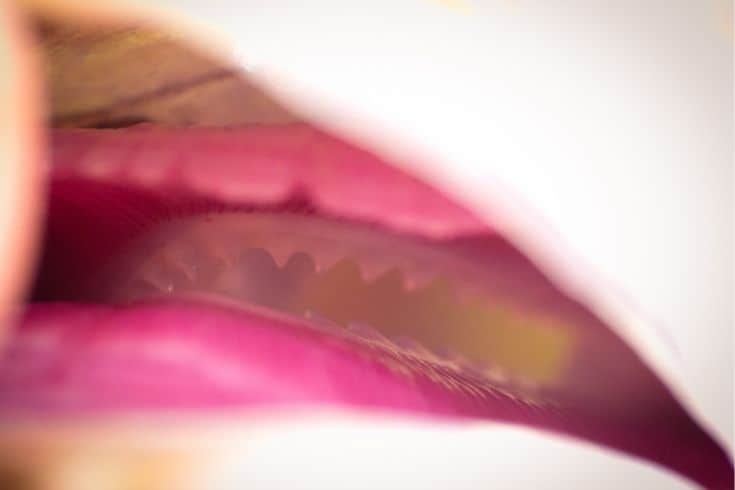
Whether you call them gill flukes or skin flukes, this parasitic infection is an unwelcome sight. The wriggling, tiny worms are smaller than 1/20 of an inch in size, but will wreak havoc on the health of your fish. All signs of parasites are unpleasant, but flukes look particularly unpleasant due to the way they are embedded in a fish’s flesh.
This condition comes with lots of nasty symptoms, to boot. Gill flukes cause a lot of itching – which ultimately results in open sores. People also notice a loss of color and appetite, which no fishkeeper wants.
Thankfully, this is a fairly common disease in aquarium fish and relatively easy to treat. You need to be diligent about administering treatment throughout the life cycle of the flukes. The eggs, larvae, and adults must all be eliminated, which can take weeks.
8. Columnaris/Flexibacter
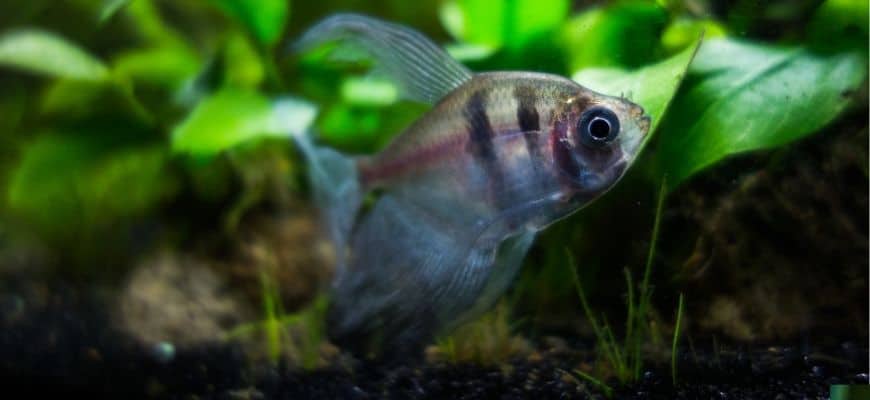
Columnaris is sometimes mistaken as cotton fin or mouth fungus due to the whitish fuzz that it grows. It is a common bacterial disease in many freshwater fish, and can also present as gray or white patches on the body.
As one of the most common bacterial infections in the fishkeeping trade, columnaris can result in severe loss of appetite, lethargy, and, ultimately death if unchecked. Because of its wide prevalence, it is important to treat columnaris early before it gets out of hand.
There are many effective treatments available commercially, though you might want to consult a vet if you need strong antibiotics. Above all, prevention is key when it comes to fighting columnaris. Boost your fish’s immune systems by changing your tank water frequently and providing a nutritious diet. These tips sound simple, but they really are key!
9. Anchor Worms
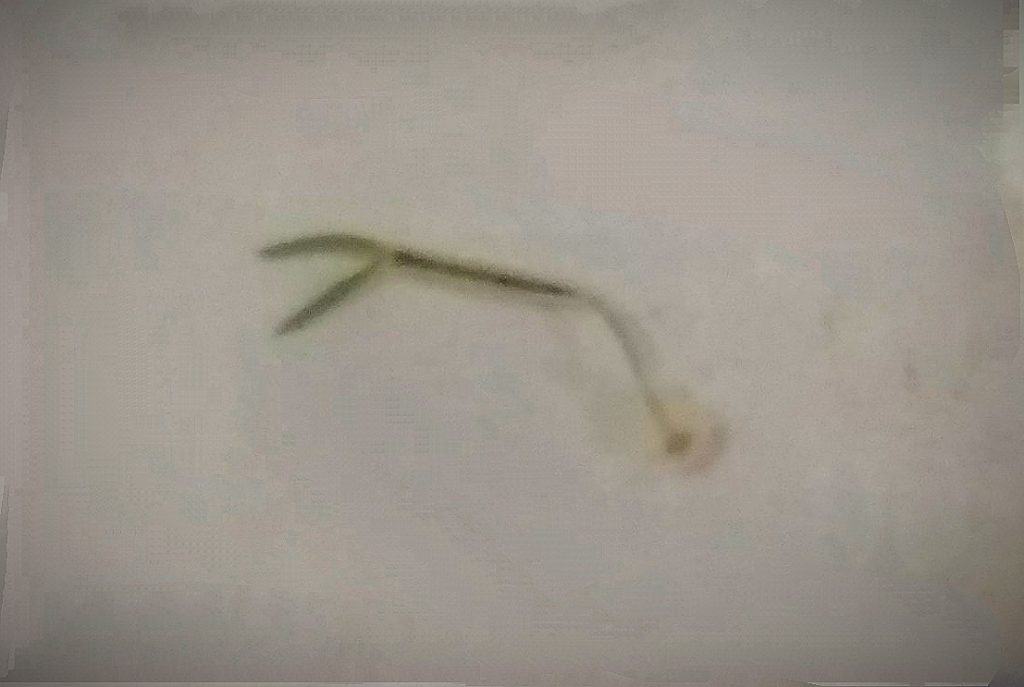
If you’ve ever wanted to look at a parasite without a microscope (we’re not sure why you would, but stay with us), then an anchor worm infestation might be your chance. These wriggly parasites are often found on koi and goldfish, can cause the fish’s skin to become irritated, and may cause your fish to rub its body against objects in the tank to alleviate the irritation.
Anchor worms are long, thin worms that burrow into the skin of the fish. They are typically greenish white, which, if you ask us, is an unfortunate color for a parasite. The consequences of an anchor worm infestation are just as unfortunate. The worms attach themselves to the fish, and, in the advanced stages, can be quite difficult to remove.
Unsanitary conditions in the aquarium can lead to an anchor worm infestation. Be sure to remove any organic material that may accumulate in the tank, and perform regular water changes. The standard aquarium treatments for parasites, such as malachite green and formalin, are generally not effective for anchor worms. You may need to physically remove the worms or seek advice from a professional.
10. Ammonia Poisoning
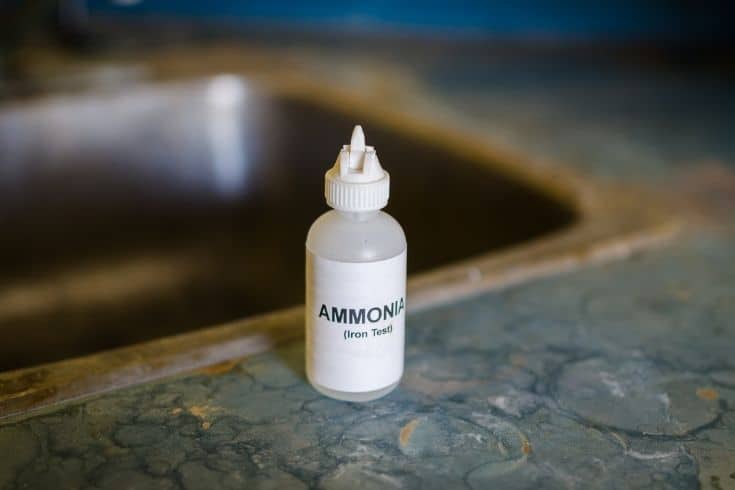
Ammonia spikes, characterized by a sudden, sharp increase in ammonia levels, can be extremely hazardous for tank inhabitants. The group of symptoms that occur as a consequence is collectively known as ammonia poisoning. This can present itself in fish with drooping fins, labored breathing, red skin, loss of coloration, lethargy, and even death.
Much like nitrite poisoning, ammonia poisoning typically occurs in tanks that don’t undergo frequent water changes. The nitrogen cycle goes out of balance, resulting in toxic levels of ammonia. To prevent such an event, ensure that you test your water frequently, and invest in a good quality filter. Biological filtration is especially useful in breaking down toxic ammonia and nitrite.
With proper maintenance, you can avoid the pain and loss that comes with experiencing an ammonia spike in any tank environment. And if your tank has already been affected, don’t despair. If you spot ammonia poisoning early and perform a couple of water changes, your fish will likely regain their health in no time! Just be sure to stay on top of water changes and testing in the future.
11. Saprolegniosis
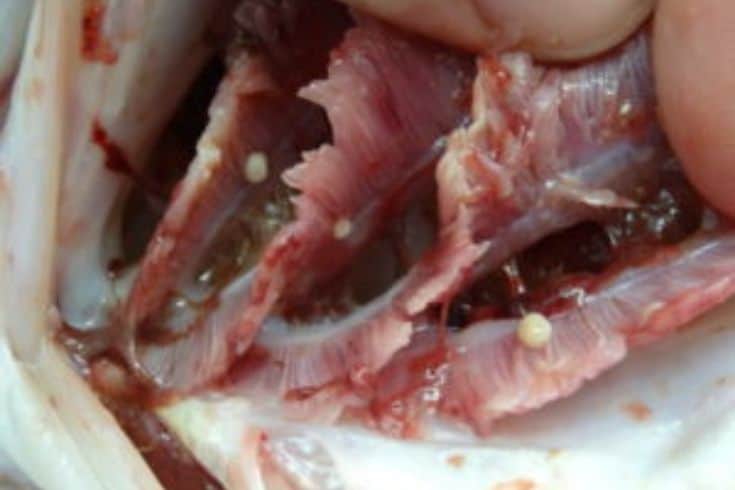
When temperatures drop, and the winter rolls around, your fish can become vulnerable to a fungal infection known as Saprolegniosis. Saprolegnia, the culprit behind the infection, is a type of water mold present in almost all aquatic habitats. Healthy fish are typically unaffected by Saprolegnia. However, those with weakened immunity can become infected and suffer from severe health issues.
Saprolegniosis can affect any part of a fish’s body. The white or grey cotton-like growths that form on the mucus layer of infected fish are one of the tell-tale signs of the disease. Left untreated, the fungal growths can cause your fish to develop a secondary infection or illness that may result in their death. Fighting two illnesses at once often proves too much for a fish to handle.
The best way to prevent Saprolegniosis is to keep your fish healthy and the temperatures in your tank consistent. Invest in a good heater, and try not to let the temperature drop below 59°F (15°C). Make sure that the water in your tank is regularly changed, and keep an eye out for any changes in the behavior of your fish. If you see any white fuzz or growths on your fish, take them to a vet as soon as possible.
12. Velvet Disease
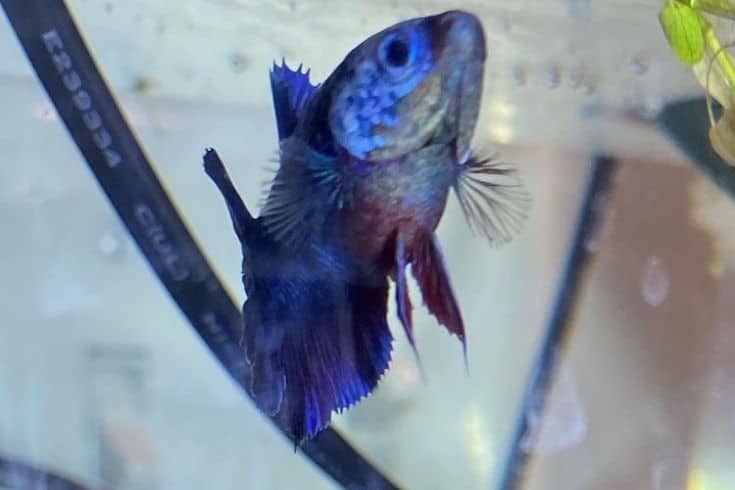
We usually associate velvet with plush, comfy fabrics, but velvet is also the name of a deadly disease that affects freshwater fish. True to its name, velvet disease results in a fuzzy, brownish growth on the affected fish’s body. The resemblance to velvet is striking, so it’s no surprise that the disease was named after the fabric. Unlike its namesake, velvet disease is far from being a pleasant, luxurious sight.
Velvet disease is caused by a parasitic single-celled organism, Oodinium. These are far from being the biggest parasites around, but the havoc they wreak is considerable. These little guys can cause your precious fish to lose their appetites, rub against objects in the aquarium, and swim in a disoriented manner. In severe cases, bits and pieces of the fish’s skin can fall away, leaving it vulnerable to infection.
Thankfully, there are commercial medications available that can treat velvet disease in fish. These typically contain copper sulfate, which is a potent substance that will make light work of any parasites present. Unfortunately, this also means that the copper sulfate can harm your fish when you add it to your tank. Double, triple, and even quadruple-check the dosage before adding it.
13. Swim Bladder Disease
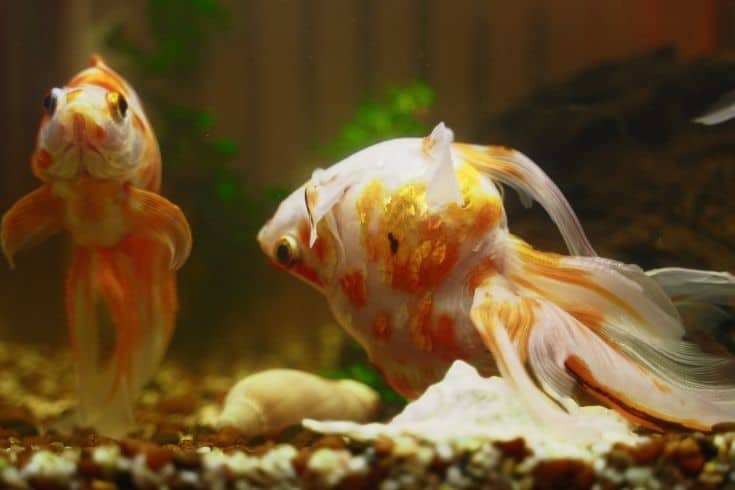
What happens when you combine a poor diet, untreated constipation, and/or incorrect handling? You end up with a fish that is suffering from Swim Bladder Disease. This unfortunate condition is caused by several different factors, and results in gas or air accumulating within the swim bladder of certain species. Consequences vary in degree, but can include swollen stomachs.
One of the key behavioral signs of swim bladder disorder is an inability to stay in the correct position. A fish will bob around helplessly, unable to maintain any balanced position on the water’s surface. When resting, you may notice them floating at the wrong angle or turning upside down. Because their digestive tract is affected, your fish may also lose its appetite.
The best way to prevent swim bladder disorder is to feed a proper diet that contains quality ingredients. Fiber is especially important for omnivores. If your fish has already contracted this illness, run an aquarium salt bath and try adjusting the water parameters accordingly. Taking preventive measures will go a long way in keeping your fish happy and healthy for years to come!
14. Lymphocystis (Cauliflower Disease)
Whether you’re a cauliflower fanatic or hate it in all its forms, we can all agree that it’s not a great look when growing on a fish. Unfortunately, this is exactly what happens when a fish contracts lymphocystis. The pink and white bumps that result are clustered in a manner that is reminiscent of their namesake. Frankly speaking, we think it looks gnarly and nasty. This is definitely a disease you want to keep at bay.
As one of the only viral infections that target fish, it’s a unique one for sure (for all the wrong reasons). Unfortunately, there is no treatment for it. All you can do is wait it out, and hope for your fish’s natural immune system to kick in and defend your fish. Nine times out of ten, it will eventually go away. In some cases, however, the bumps may get infected, leading to severe, life-threatening complications.
Please don’t take your chances with this one. Because lymphocystis is highly contagious, it’s important to take preventative measures. The best way to do this is to do what any responsible fishkeeper would do. This means keeping your tank clean, quarantining new arrivals, testing your water frequently, and giving your fishy friends a nutritious, wholesome diet. This way, you’ll keep your fish safe and sound!
15. Fish Lice (Argulus)
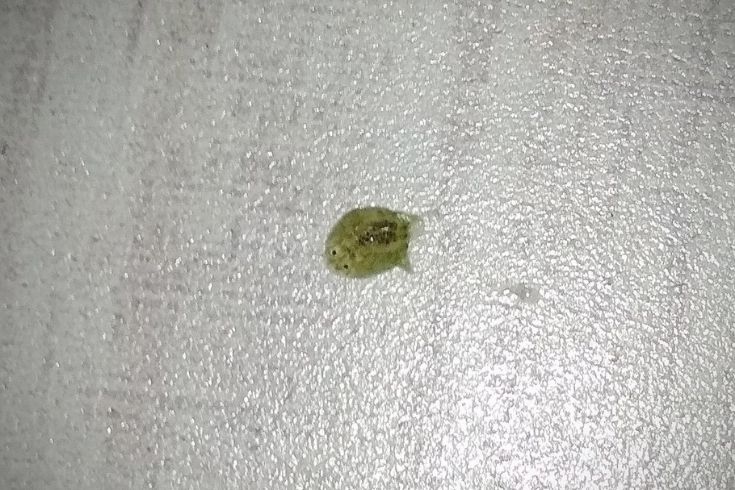
Parasitic fish diseases are (sadly) quite common, and fish lice are some of the most common culprits. These tiny crustaceans have needle-like appendages that they use to pierce the skin of your fish, and attach themselves to your pet. Like all parasites, the argulus will then feed on your fish, causing tiny red dots to form. Itching is also a common symptom due to the discomfort this creates.
Manual removal is one of the most effective ways to rid your fish of Argulus. Yes – this means putting on a pair of rubber gloves and removing these nasty little parasites with your hands. You’ll need a significant amount of skill to do this successfully. Many people remove just the tail, leaving part of the argulus attached to the fish. This can aggravate the situation, so please seek professional help if needed.
There are also antiparasitic products available that can rid your fish of argulus. However, none of these are FDA-approved, so you’ll need to check the product’s label before you buy. Since we’re going down the unregulated route, many people also use mild-grade insecticides. Again, you’ll want to consult a professional and be very careful not to cause any further harm to your fish.
16. Vibriosis (Vibrio bacteria)
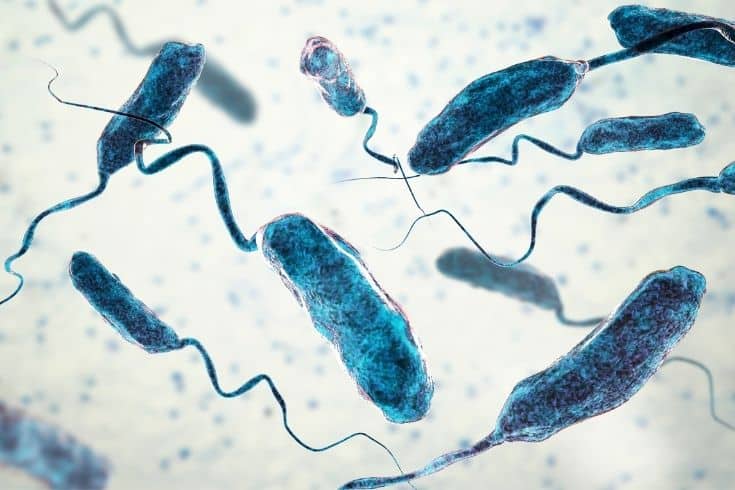
Vibriosis typically affects fish that:
1. Live in warm climates (usually Asia)
2. Are raised in a farm or aquaculture environment
3. Have a compromised immune system
These are highly specific circumstances, which means that, yes – the risk of disease for the average pet fish is pretty low. However, the aftermath of an outbreak of vibriosis is severe, with a very low survival rate. Why? Well, sadly, most cases of vibriosis go undetected. Though it causes some inflammation, the disease progresses so quickly that it’s too late when owners catch on.
What does this mean for fish owners? Prevention is absolutely key. Keep your fish tank water clean and invest in a good water test kit. And make sure your tank isn’t overstocked – fish farms are prone to vibriosis outbreaks because they often try to cram as many fish as possible into a tiny space. Avoid this mistake at all costs – you need to put the welfare of your pets first.
Should you be fortunate enough to notice a vibriosis outbreak before it claims the life of your beloved fish, quick action is essential. You can use a broad-spectrum antibiotic to tackle the disease, but do make sure it’s vet-approved. The last thing you need is a bigger problem!
17. Neascus (Black spot disease)
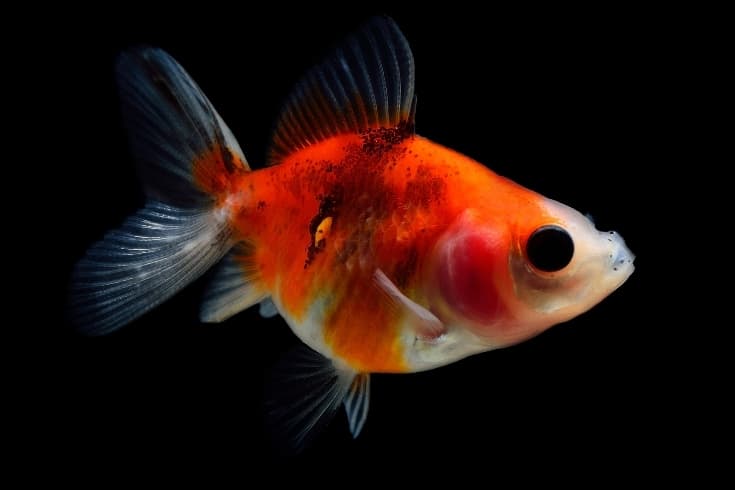
If dead tissues and skin ulcers sound like a combination made in hell, then you’ll hate learning about Neascus. The last entry on our list of common fish diseases is, black spot disease. It is caused by a group of parasitic flatworms that feed on your fish’s skin, leaving unsightly black spots behind in their wake.
There is no known cure for the disease. Thankfully, neascus also rarely kills its victims. However, the only thing you can do for your fish is to increase their water quality, change or clean the tank regularly, and provide them with stress-reducing conditions. Some people turn to formaldehyde or methylene blue to kill the parasites, though in most cases, it does not result in a full recovery.
The key to avoiding neascus is prevention. We say this over and over again, but taking good care of your fish is the best way to keep these diseases at bay. Don’t slack off on your water changes, and don’t skimp on providing a good quality diet. We know this takes a bit of effort, but your fish will thank you for it!
Final Thoughts
We hope this article gave you a better idea of some common fish diseases and how to identify them quickly. Your pet’s health is important, and it’s never too late to start learning about disease prevention for your aquarium!
Remember – knowledge is power when it comes to keeping your beloved aquatic friends in good shape. Stay informed, stay safe, and enjoy watching the wonders of an aqua world filled with healthy creatures! Thanks for reading, and do share this article with someone who might find it helpful!

Thanks a lot for the valuable information. My aquarium fish showed weakness fins are flappy with blood spots all over. Please help i lost many